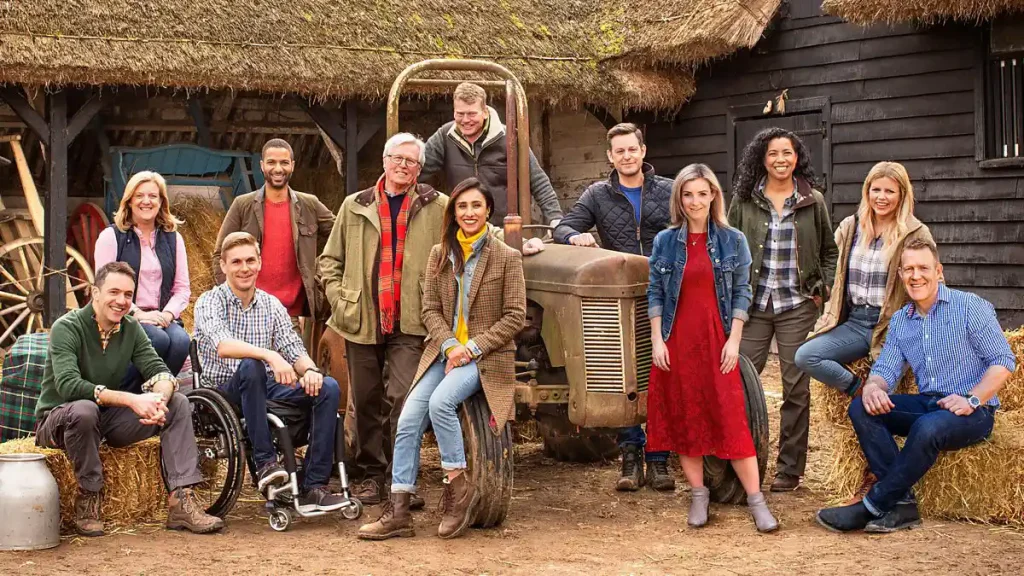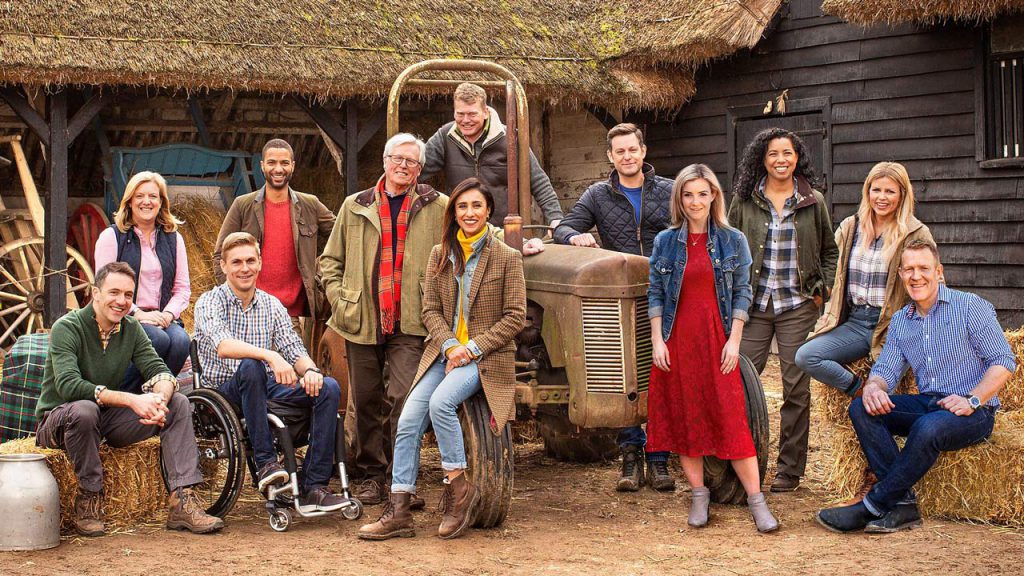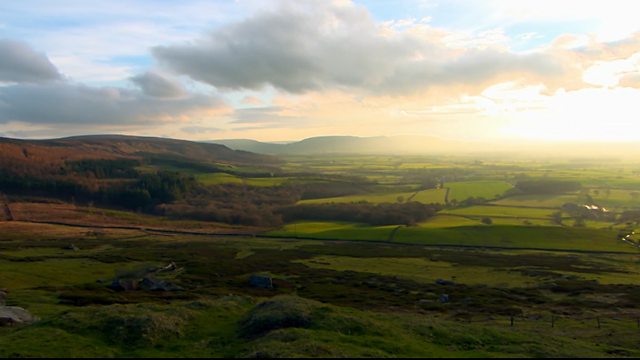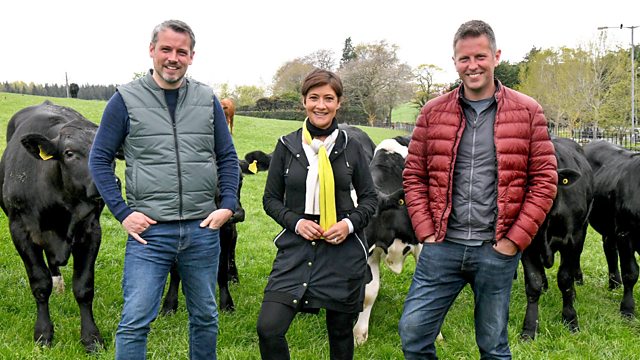Countryfile – Chew Valley: Nestled along the northern rim of the Mendip Hills in Somerset, Chew Valley remains a hidden gem, its charm accentuated by the undulating landscape. This picturesque valley is named after the River Chew, which meanders gracefully into the first of two serene, man-made lakes. The valley is a mosaic of arable fields and grazing pastures, showcasing the enduring legacy of agriculture that has sculpted this region for centuries and continues to shape its future.
Joe Crowley embarks on an insightful journey to uncover how a groundbreaking woodland project is set to revolutionize both cattle farming and environmental conservation in the area. Managing a herd of 150 cows, he discovers how these animals play a crucial role in transforming 400 acres of woodland, part of one of the UK’s most ambitious farming initiatives. This pioneering project aims to integrate livestock management with ecological restoration, creating a symbiotic relationship that benefits both the animals and the natural habitat.
As Joe delves deeper into the heart of Chew Valley, he encounters the inspiring stories of local residents whose lives are intricately woven into the fabric of this landscape. One such story is that of a small woodland area that has become a sanctuary for hundreds of individuals suffering from PTSD. Here, nature therapy provides solace and healing, offering a peaceful retreat where individuals can reconnect with the natural world and find respite from their daily struggles.
In another corner of the valley, Joe meets a local artist who draws from the land itself to create stunning works of art. Using locally grown vegetables and naturally sourced materials such as mud, oak bark, and charcoal, this artist transforms humble elements into beautiful expressions of creativity, highlighting the profound connection between art and nature in Chew Valley.
Joe’s exploration also takes him to a local school, where students have been entrusted with the care of some rather unusual guests – eels. These young stewards have nurtured the eels, preparing them for release into a nearby river, a project that not only educates the students about local wildlife but also fosters a sense of responsibility and stewardship for the environment.
Meanwhile, Tom investigates a critical issue facing the agricultural community: farm safety. Farming remains the most hazardous industry in Britain, with approximately thirty fatalities occurring on farms each year, a grim statistic that has remained stubbornly consistent over the past few decades. As Farm Safety Week begins, Tom seeks to understand the implications of the Health and Safety Executive (HSE) ceasing its farm inspections earlier this year and what this could mean for the future of farm safety. He speaks with experts and farmers alike, uncovering the challenges and risks that continue to plague the industry and exploring potential solutions to make farming a safer occupation.
Countryfile – Chew Valley
Countryfile’s visit to Chew Valley not only highlights the region’s rich agricultural heritage but also showcases the innovative and inspirational ways in which the community is working towards a sustainable and harmonious future. From the transformative woodland project that marries cattle farming with ecological preservation to the personal stories of healing and creativity fostered by the natural environment, Chew Valley emerges as a beacon of resilience and hope.
The program underscores the importance of maintaining a delicate balance between human activity and nature, emphasizing that sustainable practices and community involvement are key to preserving the valley’s unique character and beauty for future generations. As Joe and Tom’s stories unfold, viewers are invited to witness the profound connections that tie people to the land and each other, offering a poignant reminder of the enduring bond between humanity and the natural world.
In Chew Valley, the past and the future converge in a landscape that is as much shaped by the hands of its residents as it is by the timeless rhythms of nature. Through the lens of Countryfile, the valley’s rich tapestry of life, work, and nature is brought to life, providing a captivating glimpse into a community that thrives on innovation, tradition, and a deep respect for the land they call home.
Discovering Chew Valley: A Hidden Gem in Somerset
The Picturesque Landscape of Chew Valley
Nestled along the northern edge of the Mendip Hills, Chew Valley unfolds like a painter’s masterpiece. Rolling hills embrace lush meadows, while ancient woodlands whisper tales of bygone eras. This hidden paradise in Somerset captivates visitors with its undulating terrain, a symphony of natural beauty that changes with each passing season.
As you traverse the valley, your eyes are drawn to the patchwork of fields stretching as far as the horizon. The landscape is a living tapestry, woven with vibrant greens of pastures and the golden hues of ripening crops. Each vista offers a new perspective, inviting you to pause and marvel at the harmonious blend of nature’s artistry and human stewardship.
A Brief Introduction to the River Chew and Man-Made Lakes
At the heart of this enchanting valley flows the River Chew, a life-giving artery that has shaped the region for millennia. The river meanders gracefully through the landscape, its gentle curves carving a path that seems to tell a story with each twist and turn. As it journeys onwards, the Chew breathes life into the surrounding ecosystem, nurturing a diverse array of flora and fauna.
The river’s journey is punctuated by two serene man-made lakes, jewels set within the valley’s verdant embrace. These tranquil bodies of water serve as mirrors to the sky, reflecting the ever-changing moods of Somerset’s weather. Fishermen cast their lines into the still waters, while birds skim the surface in search of their next meal. The lakes not only enhance the valley’s beauty but also play a crucial role in water management and biodiversity conservation.
The Valley’s Agricultural Heritage and Modern Farming Practices
Chew Valley’s story is deeply rooted in its agricultural heritage, a legacy that continues to shape its identity. For centuries, farmers have tilled these fertile soils, their hard work etched into every furrow and field boundary. This rich history is evident in the ancient stone walls that crisscross the landscape, standing as silent sentinels to generations of rural life.
Today, the valley’s farmers blend time-honored traditions with innovative practices. Modern tractors share the fields with grazing livestock, a testament to the evolving nature of agriculture in the region. Sustainable farming methods are gaining ground, with many local producers embracing organic techniques and wildlife-friendly practices. This forward-thinking approach ensures that Chew Valley’s agricultural legacy continues to thrive while preserving the natural beauty that makes the area so special.
As you explore Chew Valley, you’ll witness the delicate balance between human activity and nature conservation. The farmers here are not just cultivators of the land but also its custodians, working tirelessly to maintain the valley’s unique character for future generations. Their efforts create a living landscape where past and present intertwine, offering visitors a glimpse into the heart of rural Somerset.
Innovative Projects Transforming Chew Valley
The Groundbreaking Woodland Project: Blending Cattle Farming with Conservation
In the heart of Chew Valley, a revolutionary approach to land management is taking root. Picture this: a herd of 150 cows, not confined to traditional pastures, but roaming freely through 400 acres of lush woodland. This isn’t a scene from a pastoral fantasy, but a cutting-edge project that’s reshaping the landscape of agriculture and conservation in the region.
At first glance, the idea of cattle in woodlands might seem counterintuitive. However, this innovative approach is proving to be a game-changer. The cows, acting as nature’s landscapers, help maintain the woodland by grazing on undergrowth and creating natural clearings. In turn, this process encourages biodiversity, allowing sunlight to reach the forest floor and promoting the growth of a diverse range of plant species.
Managing 150 Cows in 400 Acres of Woodland
The logistics of managing such a large herd in a woodland setting are both challenging and fascinating. Unlike traditional cattle farming, this project requires a deep understanding of both animal husbandry and forest ecology. The cows are carefully monitored to ensure their wellbeing, while their impact on the woodland is closely studied.
Technology plays a crucial role in this unique setup. GPS collars help track the herd’s movements, providing valuable data on their grazing patterns and preferences. This information is then used to adjust management strategies, ensuring the cows are distributed effectively throughout the woodland. The result is a dynamic system where the needs of the cattle and the health of the forest are carefully balanced.
Benefits of Integrating Livestock Management and Ecological Restoration
The benefits of this groundbreaking project extend far beyond the boundaries of Chew Valley. By integrating livestock management with ecological restoration, the project is creating a model for sustainable agriculture that could be replicated across the country and beyond.
Firstly, the woodland-grazing system significantly reduces the carbon footprint associated with traditional cattle farming. The trees act as natural carbon sinks, offsetting the emissions produced by the cattle. Moreover, the diverse woodland ecosystem supports a wide range of wildlife, from insects to birds and small mammals, enhancing local biodiversity.
From an economic perspective, this integrated approach offers farmers a way to diversify their income streams. In addition to beef production, the woodland can provide sustainable timber, wild food products, and even ecotourism opportunities. This multifaceted approach to land use not only boosts farm resilience but also contributes to the long-term sustainability of rural communities.
Nature Therapy: A Woodland Sanctuary for PTSD Sufferers
Amidst the tranquil beauty of Chew Valley’s woodlands, a remarkable healing initiative is taking root. A small woodland area has been transformed into a sanctuary for hundreds of individuals suffering from Post-Traumatic Stress Disorder (PTSD). This innovative program harnesses the power of nature to provide solace and support for those grappling with the invisible scars of trauma.
The concept of nature therapy, also known as ecotherapy, is not new. However, its application in Chew Valley is uniquely tailored to the needs of PTSD sufferers. The program offers a carefully structured environment where participants can reconnect with nature at their own pace. From guided woodland walks to mindfulness sessions under the forest canopy, each activity is designed to promote healing and restore a sense of peace.
The impact of this woodland sanctuary on PTSD sufferers has been profound. Many participants report a significant reduction in symptoms such as anxiety and hypervigilance. The gentle rustle of leaves, the earthy scent of the forest floor, and the soothing palette of greens all work in harmony to create a natural antidote to the stresses of modern life. For many, this woodland retreat has become a lifeline, offering respite and renewal in equal measure.
From Farm to Art: Local Artist’s Unique Creations Using Natural Materials
In a charming corner of Chew Valley, creativity blooms in the most unexpected ways. A local artist has taken the concept of “locally sourced” to new heights, using materials harvested directly from the land to create stunning works of art. This innovative approach not only produces beautiful pieces but also forges a deep connection between art, nature, and the local community.
Imagine canvases painted with vibrant hues extracted from homegrown vegetables, sculptures molded from rich, valley mud, and intricate drawings etched with charcoal from locally sourced oak. Each piece tells a story of the land, capturing the essence of Chew Valley in every brushstroke and curve. The artist’s studio, nestled among the fields and woods, serves as both a workspace and a testament to the valley’s natural bounty.
This unique artistic practice has garnered attention beyond the borders of Chew Valley. Art enthusiasts and environmentalists alike are drawn to the sustainable nature of the work and its deep roots in the local landscape. Through exhibitions and workshops, the artist shares not just their creations but also the philosophy behind them, inspiring others to look at their surroundings with fresh, creative eyes.
Educational Initiatives: Nurturing Eels and Environmental Stewardship in Schools
In an unexpected twist of environmental education, the schools of Chew Valley have become temporary homes to some rather unusual guests – eels. This innovative program is not just about raising fish; it’s about nurturing a new generation of environmental stewards. Students across the valley are taking on the responsibility of caring for these fascinating creatures, learning valuable lessons about ecology, conservation, and the delicate balance of aquatic ecosystems.
The eel-rearing project is more than just a classroom novelty. It’s a hands-on introduction to the complex world of river ecology. Students monitor water quality, study eel behavior, and learn about the species’ remarkable life cycle. As they prepare the eels for release into local rivers, the children develop a deep sense of connection to their local waterways and the creatures that inhabit them.
This unique educational initiative extends beyond the classroom walls. It’s sparking conversations at dinner tables, inspiring community clean-up events, and fostering a valley-wide appreciation for local biodiversity. The project serves as a powerful reminder that environmental education can be both engaging and impactful when it’s rooted in real-world experiences and local ecosystems.
F.A.Q. Countryfile – Chew Valley
Q.: What makes Chew Valley a unique destination in Somerset?
A.: Chew Valley, situated along the northern rim of the Mendip Hills, is renowned for its picturesque landscape. Characterized by rolling hills, lush meadows, and the River Chew, which flows into two man-made lakes, the valley’s beauty is accentuated by its rich agricultural heritage and scenic charm.
Q.: How does the pioneering woodland project in Chew Valley benefit both cattle and the environment?
A.: The innovative woodland project in Chew Valley integrates cattle farming with ecological restoration. By managing 150 cows in 400 acres of woodland, the project promotes biodiversity as the cows graze on undergrowth, creating clearings that encourage plant growth. This symbiotic relationship enhances both livestock management and forest health.
Q.: How is Chew Valley supporting individuals with PTSD through nature therapy?
A.: Chew Valley has established a woodland sanctuary offering nature therapy to individuals suffering from PTSD. This therapeutic environment allows participants to engage in guided walks and mindfulness activities within the forest, providing a natural setting for healing and reducing symptoms such as anxiety and hypervigilance.
Q.: What artistic initiatives are being undertaken by local residents in Chew Valley?
A.: In Chew Valley, local artists are creating unique works of art using natural materials sourced from the region. These include pigments from homegrown vegetables, sculptures from valley mud, and drawings with oak charcoal. This approach not only produces beautiful art but also strengthens the connection between creativity and the local environment.
Q.: What educational programs are available in Chew Valley to promote environmental stewardship among students?
A.: Chew Valley schools participate in innovative educational programs, such as raising eels in classrooms. This hands-on initiative teaches students about river ecology, water quality, and conservation. By nurturing eels and preparing them for release into local rivers, students develop a deep appreciation for local biodiversity and environmental stewardship.
Conclusion Countryfile – Chew Valley: Chew Valley’s Bright Future
The Convergence of Tradition and Innovation in Chew Valley
Chew Valley stands as a shining example of how rural communities can embrace change while honoring their roots. This picturesque corner of Somerset has masterfully woven together the threads of tradition and innovation, creating a tapestry that’s both vibrant and enduring. The valley’s farmers, artists, and conservationists have proven that progress doesn’t mean abandoning the past—it means building upon it.
Consider the groundbreaking woodland project, where centuries-old farming practices meet cutting-edge conservation techniques. This innovative approach not only preserves the land but also breathes new life into traditional cattle farming. Similarly, local artists draw inspiration from age-old techniques while using materials sourced directly from the valley, creating a unique artistic expression that’s deeply rooted in the local landscape. These initiatives demonstrate how Chew Valley is not just preserving its heritage, but reimagining it for the future.
Lessons from Chew Valley for Sustainable Rural Development
Chew Valley’s journey offers valuable insights for rural communities worldwide grappling with the challenges of sustainable development. First and foremost, it underscores the importance of community involvement. The valley’s success stories—from the woodland project to the school-based eel conservation program—all stem from active community participation. This grassroots approach ensures that development initiatives are not only sustainable but also deeply meaningful to local residents.
Moreover, Chew Valley exemplifies the power of diversification. By embracing a range of initiatives—from innovative farming practices to nature therapy programs—the valley has created a resilient local economy. This multi-faceted approach not only provides various income streams but also enhances the overall quality of life for residents. It’s a powerful reminder that rural areas can thrive by thinking creatively and leveraging their unique natural and cultural assets.
Invitation to Experience the Beauty and Spirit of Chew Valley
As we reflect on the remarkable story of Chew Valley, it becomes clear that this isn’t just a place—it’s an experience waiting to be discovered. The rolling hills, serene lakes, and vibrant communities beckon visitors to explore and engage. Whether you’re an nature enthusiast, an art lover, or simply someone seeking a peaceful retreat, Chew Valley offers something truly special.
Imagine walking through ancient woodlands where cattle graze freely, their presence a testament to innovative conservation practices. Picture yourself strolling along the banks of the River Chew, its waters reflecting the ever-changing Somerset sky. Envision meeting local artists in their studios, where creativity flows as freely as the valley’s streams. These are just a few of the experiences that await in Chew Valley.
But beyond its physical beauty, it’s the spirit of Chew Valley that truly captivates. Here, you’ll find a community that’s deeply committed to preserving its heritage while embracing the future. You’ll encounter farmers, artists, and educators working together to create a sustainable and vibrant rural economy. And you’ll witness firsthand how a small valley can have a big impact on the world.
So why not plan your visit to Chew Valley today? Come and see for yourself how this remarkable place is shaping the future of rural life. Walk its paths, meet its people, and immerse yourself in its unique blend of tradition and innovation. Who knows? You might just find yourself inspired to bring a piece of Chew Valley’s spirit back to your own community. After all, the lessons learned here have the power to transform not just one valley, but the world at large.




